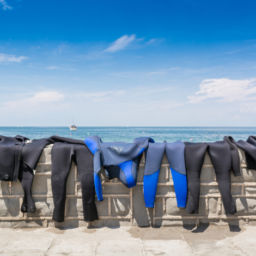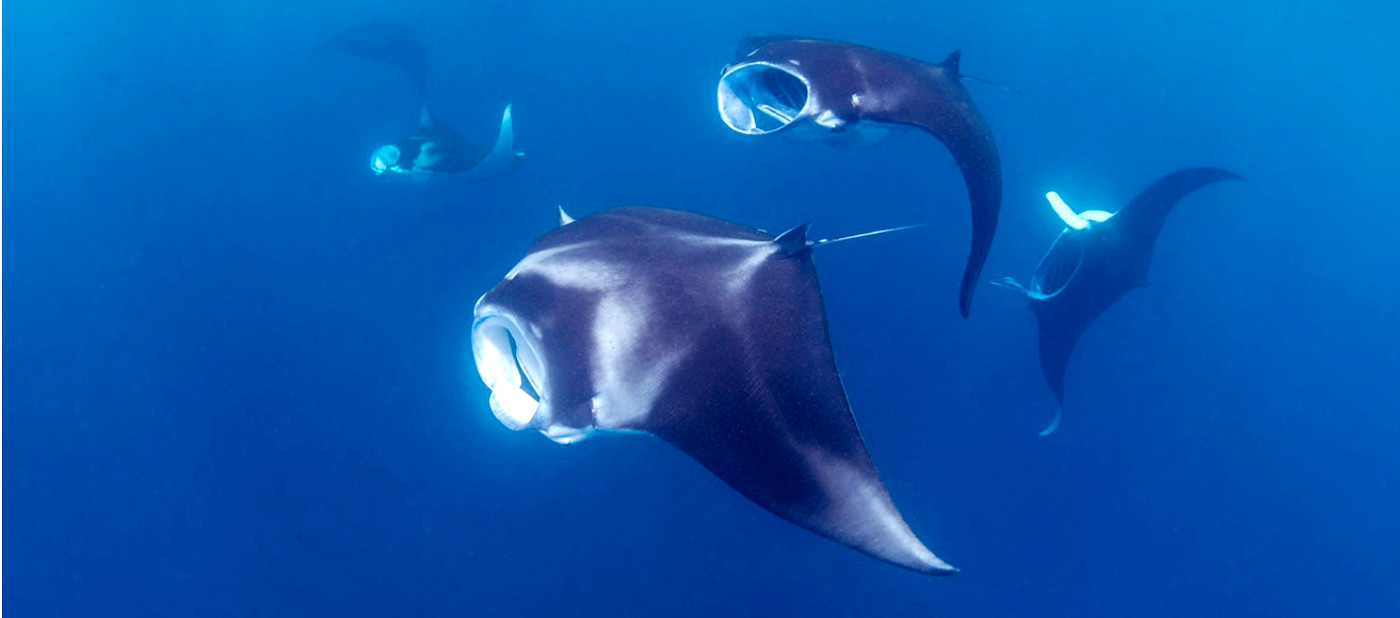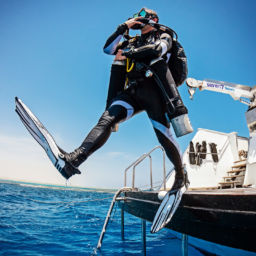Ever since technical diving began, the sport has carried a reputation of being deep, dark, and dangerous. But what are the risks of technical diving? Is it really that dangerous for tech divers? Here we’ll take a closer look.
What is technical diving — really?
Considering the potential risks of technical diving is impossible without defining what technical diving actually is. Generally, divers distinguish between recreational and technical diving but, strictly speaking, much technical diving is done for recreation — for fun. It may be a more serious or complex form of recreation, but it is nonetheless recreation.
So, where do we draw the line? For this post, we will consider planned diving beyond no-stop limits as technical diving. This includes both open-ocean diving and overhead-environment diving, such as cave or wreck penetration. Most often, the type of diving dictates the need for additional equipment, possibly including a range of nitrox or trimix gases. All of these are included in our definition of technical diving.
It’s also worth examining the anatomy of a technical dive. Simply put, it falls into two parts: the bottom time and the decompression obligation. When a problem occurs will determine its severity: something going wrong at the beginning of the bottom time generally carries fewer consequences than a problem that occurs towards the end of the bottom time when a diver has incurred the full decompression obligation.
Risks of technical diving
First things first — any dive that does not allow a diver to return directly to the surface at any point carries additional risk. From the beginning of their open-water certification course, divers learn that they should complete a safety stop at the end of each dive, but strictly speaking this is not a mandatory decompression stop. Mandatory decompression stops are just that — a diver must carry them out to return to the surface safely.
Missing mandatory decompression stops almost certainly leads to decompression sickness. In an open-ocean environment, we talk about a ‘virtual ceiling.’ While there is no physical barrier separating the tech diver from the surface, mandatory stops create a virtual barrier. In overhead environments, divers have a ‘hard ceiling.’ This may be the top of a cave, one of the decks of a wreck on a penetration dive, or a part of a mine, for example.
Therefore, technical divers in an overhead environment must know exactly where and how far away they are from the nearest exit. Even in open ocean or freshwater environments, the simple fact that technical diving often involves being further away from the surface means that there is increased risk.
Technical divers understand and accept those risks, but more importantly, they work hard to mitigate and minimize them. As risk is a part of tech-diving life, so too is mitigation.
Risk analysis and mitigation
Risk analysis and mitigation start on the first day of a technical diving course or possibly even before, when students immerse themselves in the study of the theory part of their chosen course. Understanding which risks are involved in any given dive and how to manage them is key to minimization.
Knowing the risks of a dive often starts with an honest assessment — of the individual diver, of their team, of the conditions expected on the dive, and of potential hazards. Knowing these as well as possible, divers can start thinking about potential solutions.
Often, these solutions will involve carrying additional equipment. Redundancy is a key concept of technical diving, and basically means that divers should carry at least two of each piece of life-support equipment. Then, there is the gas supply. With open-circuit technical dives, a diver carries a minimum of one-third of his gas supply in reserve. In overhead environments it is often substantially more. On CCR rebreather dives, open-circuit bailout gas is calculated based on an equipment failure at the very end of the bottom time.
Crucial diver skills
Apart from equipment and gas, perhaps the most crucial element of risk mitigation lies with divers’ skills which, in this case, refers to both technical and non-technical skills. Technical skills are those we generally consider diving skills — buoyancy control, trim, dealing with equipment failures, handling multiple gases, and following a dive plan are just a few of them.
Non-technical skills are sometimes referred to as soft skills. However, they are just as important, if not even more so. These include the ability to work as a team underwater. While technical divers are trained to be largely self-sufficient, team-oriented diving practices will go far toward minimizing risks and dealing with adverse situations.
Then there are communications. Whether via hand signals, wet notes or ‘talking’ to each other through the breathing loop of a rebreather, complex dives often require more complex communications. Complex does not necessarily mean complicated. However, discussing and agreeing on an adjustment to the dive plan, for example, does require a series of hand signals rather than one or two.
Above all, risk mitigation in technical diving is not something that divers learn in a course once and then never review. It is an ongoing process, which involves regular skills practice, both technical and non-technical, thorough dive briefings, equipment maintenance, and the confidence to talk about things that were not ideal on any given dive. But that is a topic for another post and then some.
Technical divers understand and accept that diving beyond no-stop limits carries additional risks. They also analyze, train, plan, and practice to mitigate and minimize those risks for each dive. With all that in mind, it is perfectly fine to decide that you are not comfortable taking those risks, whether that means sitting out one particular dive or never trying technical diving at all.







